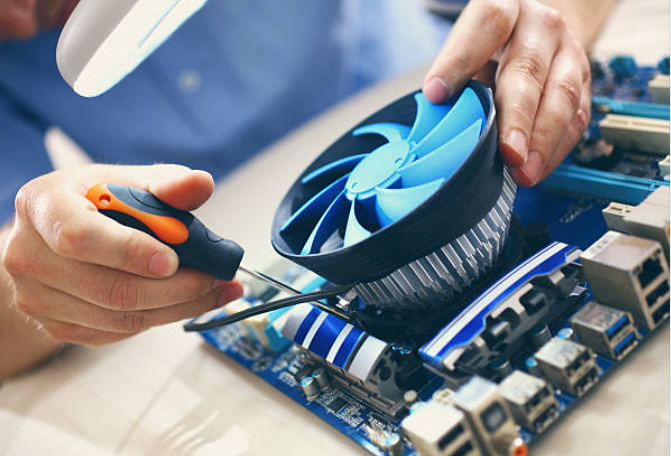Overheating is the first sign that a laptop fan isn’t functioning. You may notice that your laptop has faults and unusual noises. First, we’ll rule out the supporters in three ways:
- Changing the sound of the fans
- Checking for air leaks in the vents
- Using third-party apps
- Windows Checkup
- Error-hunting
- Temperature Checks
Now that you know everything, it’s time to learn how to test your laptop’s fan.
Best 6 Ways On How to Check if Laptop Fan is Working Properly?
Here are the six most effective methods for determining whether or not the laptop fan is functioning properly.

1. Taking Notes From The Crowd
There is a distinct sound made by a fan’s whirling motion. You’re familiar with that part, aren’t you? Think back to the last time you heard a helicopter in a movie.
Even so, you might expect to hear a mild buzzing sound from your laptop’s fan.
- Turn on your laptop and place your ear to the side where the fans are positioned.
- Don’t worry if the fans don’t start right away; they only kick in when the laptop becomes hot.
- Run a hefty application and wait a few seconds before trying to hear them. That big application maybe a 4K video editing software or a high-res game.
If you hear the fans, they are working. But note the sound quality.
- Is it cracking?
- Is it a lopsided fan?
- Do you have a strange-sounding stuck object?
The sound of a laptop fan is always smooth and consistent. Any deviation from that should indicate a need for service.
2. Hands-On Sensing of the Air
Before you take any drastic measures, I want you to experience the support of the fans firsthand. You may even use your hands to feel the air as it exits the vents.
- Put your hand in front of the laptop’s vents after you’ve switched it on and run a demanding application.
- You should be able to detect a tinge of warmth.
- To ensure that it isn’t too faint, hold a piece of paper or cloth in front of the vents. Paper or fabric should move a little bit.
- What gives? Take the next step.
3. Using Third-Party Apps
It was mostly physical. This one requires software that can dive deeper into your laptop’s hardware and get all data. It may be paid or free. But they work and take away any technicalities.
So, if you’re feeling technologically challenged, go for the software. HWMonitor, SpeedFan, and RealTemp for Windows; iStart Menu for Mac.
The program is simple to use and only requires a few steps to display the data. This technique is excellent. In case none of these work for you, there is a Windows-based approach.
4. At startup, press F12
- Disconnect your laptop and all other gadgets.
- Restart it by pressing F12 repeatedly.
- You will be routed to Windows diagnostics. There you may test the speed of your fans and see whether they operate.
Windows Diagnostics is still available from the Start menu, but it requires a restart to operate.
5. Locate and fix any fan-related errors that you find
Whenever you don’t know what’s wrong with your laptop, seek for the telltale indicators.” A possible Blue Screen of Death might occur if your computer’s fans are not functioning and it is overheating, for example.
Alternatively, even if the fans are running, there may be a problem with the heat sink or any other component of the cooling system.
In other cases, the machine may even overheat if the thermal chemical that connects the CPU to the heat sink or cooling system is faulty.
6. Keep a close eye on the weather
It’s possible that a faulty motor is at blame even if the fans are running properly. You are aware that a cooling system consists of a variety of components.
Is there a way to measure the temperature of a room? To achieve this, you may use any hardware monitoring software you choose.
While doing nothing, if the temperature rises beyond 130 degrees, you should be concerned about the health of your air conditioning system.
Quick Links:
- 5 Best Laptops For Solidworks: [Our Recommendations]
- 10 Best Laptops for Watching Movies: [High-End]
- 10 Best Laptops Under $400: Updated List
- 10+ Best Laptops For DJs: Best Music Production Laptop
- Top 5 Best Laptops for Animation: ( 3D & 2D )
Conclusion: How to Check if Laptop Fan is Working Properly?
It’s a good idea to check the fans on your laptop if it’s becoming hot to the touch. First, check to see whether the temperature rises over 130 degrees Fahrenheit when the machine is running at a constant speed.
If this is the case, it is probable that one or more of the cooling system’s components has malfunctioned.
Before calling the manufacturer’s customer support department, check your fans in the methods I’ve outlined above.
